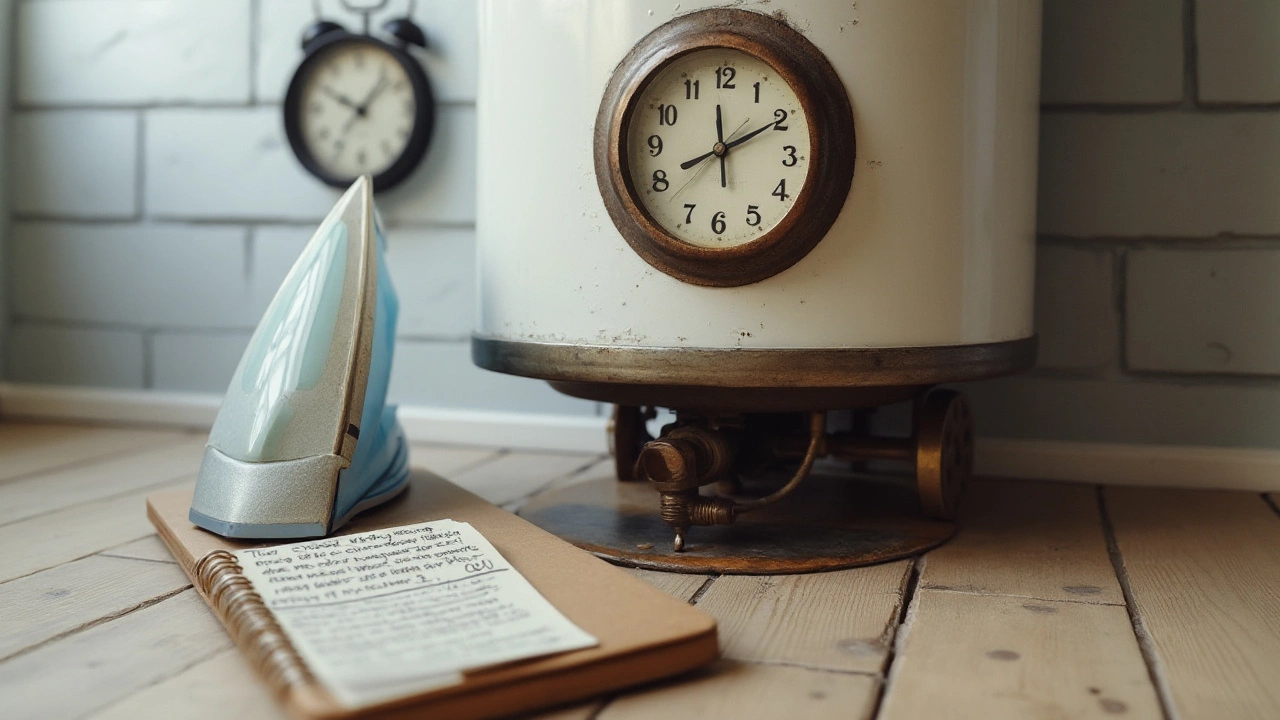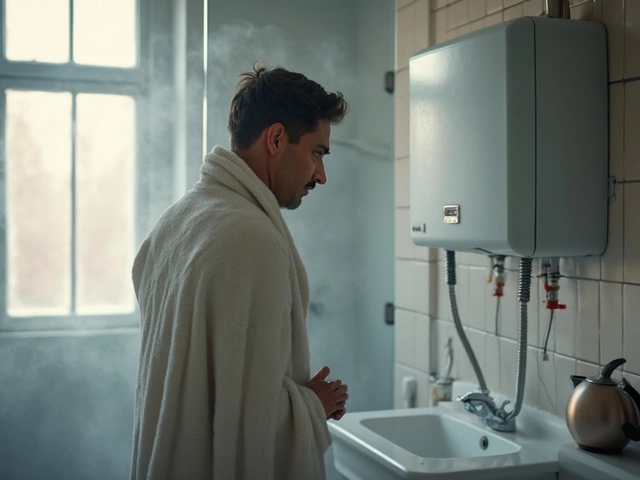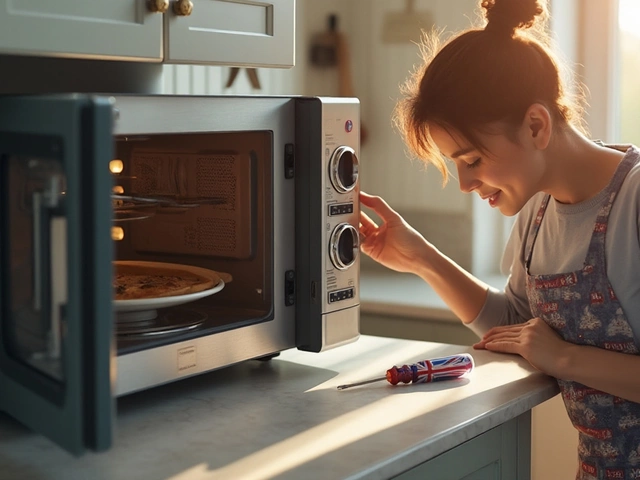Hot water is such a comfort in our lives that when the water heater starts acting up, it can really throw things off. Imagine hopping into the shower, halfway expecting a warm embrace, and instead getting an arctic blast. Let's dive into some common warning signs indicating your water heater might be on the fritz.
Knowing these signs early could save you from unexpected cold showers or a huge repair bill. We'll explore different symptoms like strange noises, fluctuating water temperatures, and even small leaks. Armed with these insights, you can catch issues before they morph into major headaches.
Unusual Noises and Their Meanings
There's a symphony of sounds that can come from a water heater, and not all of them bode well for its health. Over time, you might notice strange noises—like banging, popping, or even something akin to a kettle boiling. These are often the result of sediment build-up at the bottom of the tank. When the heater is working, this sediment can cause water to become trapped underneath and create small steam bubbles that burst, making those unmistakable popping sounds. It’s like your water heater is trying to speak to you, hinting it’s time for some attention.
Another sound that might unsettle you is a rumbling or banging noise. This can signal that your water heater is overexerting itself, often due to sediment reducing its efficiency. Like an athlete carrying extra weight, your heater works harder to heat the same amount of water. Eventually, this strain can lead to more severe issues, including potential damage to the tank over time. A simple flush of the tank can decrease the likelihood of these noises, extending the life of your water heater by ensuring it operates smoothly. Don’t ignore these audible warnings. They are your hint to begin water heater repair before more costly problems surface.
Hearing hissing or sizzling sounds can be equally alarming. Unlike popping noises, these usually point to a leak somewhere in the system. As unsettling as the noise might be, it's the sound of water dripping onto the heating element or a malfunctioning pressure relief valve. Left unattended, even a small leak can escalate to water damage, or worse, a completely non-functional water heater. By responding to this hissing promptly, you preempt any serious damage while maintaining the effectiveness of your home’s hot water supply.
Water heater repair isn’t just about fixing what's broken—it's about observing and responding to what your heater is communicating. Professionals often cite the importance of attentive maintenance and a responsive approach to odd sounds. In words of Gary Wilson, a noted plumbing expert,
"A well-maintained water heater need never sound like a percussion section warming up."Regular check-ups can be done at home or by a professional to help avoid these noisy concerns. Taking early action at the first unusual clank or hiss can save you from more significant headaches down the line.

Temperature Inconsistencies
Temperature inconsistencies in your hot water are not just an inconvenience; they can signal significant issues with your water heater. Picture this: you've set up your perfect shower—exactly warm enough to feel like a cozy hug, and then suddenly it's like you're facing a waterfall in winter. These annoying fluctuations can often be traced back to specific internal issues.
The most common culprits behind these annoying ups and downs in temperature can be the thermostat itself or an ailing heating element. When thermostats fail, they often send mixed signals to the water heater, causing extremes in temperature. Similarly, heating elements, if not functioning correctly, might mean parts of the heater aren't doing their job, resulting in lukewarm or even cold showers. But it’s not just internal mechanics at play; external factors such as sediment buildup can also be a silent assassin in your water heater tank. Over time, minerals from your water supply settle at the bottom of the tank, creating a barrier between the heater and the water it's supposed to heat. This means your heater works harder and less efficiently, leading to temperature problems.
Beyond the realm of thermostat and sediment, an electric water heater's dip tube could also be to blame. The primary task of this tube is ensuring cold water reaches the bottom of the tank to be heated, leaving the hot water at the top ready for your needs. Should the dip tube break or become faulty, the incoming cold water mixes directly with the outgoing hot, resulting in a continuous cycle of lukewarm temperatures. To many, this might seem like a problem demanding only an expert’s touch, but some temperature issues can be investigated personally. Start with a simple adjustment of the thermostat. Place a thermometer under running hot water and compare it to your settings on the heater—simple tests like this can be eye-opening.
While examining the water heater, closely listen for strange noises, such as cracks or pops, that signal sediment issues. A telltale sign is a continuous rattling, much like an insistent tambourine. If sediment is causing chaos, draining and flushing your water heater might provide a temporary reprieve. Still, as these symptoms resurface, regular maintenance or professional attention becomes imperative. Notably, sometimes parts need replacing outright, whether it's thermostats or heating elements. The do-it-yourself approach isn't for everyone and missteps can lead to greater headaches. Consider professional inspection when issues linger.
According to a report by the Australian Energy Market Operator, regular maintenance of home appliances like water heaters can boost energy efficiency significantly and prolong their system life by up to 25%.
Finally, prevention is often the best step. Investing in a water softening system to tackle the issues of mineral accumulation is worth considering. A system like this, while requiring upfront investment, can save a wealth in future water heater repair costs and provide consistent hot water. Knowing what signs to look for in your water system gives you a head start on avoiding the icy shower surprise. Stay mindful of what your water heater is trying to tell you, and with just a bit of attention, your hot water woes can be washed away before they grow into costly problems.

Signs of Leakage
Spotting a leak early on can be the difference between a simple fix and a flood. But recognizing such signs isn't always about water pooling at the bottom of your water heater. Some hints are subtle, almost like whispers in a quiet room, that get louder over time. A common sign is moisture around the base of the heater. There might not be an obvious puddle, but dampness or pooling water can develop slowly. Be sure to look around neighboring pipes and fittings. If these are visibly wet or rusted, then the chances of a leak from your water heater increase significantly.
Rust or corrosion is another tell-tale sign your water heater may be leaking. Rust spots around the tank, especially at the seams, are dead giveaways of trouble. As the tank ages, its protective outer layer may break down, making it prone to rust, which can lead to leaks. Any discoloration in the water coming from taps is a hint that something is off. This can be particularly noticeable with warm water, which might appear muddy or reddish. Look also for any peculiar odor. Such changes usually mean water from the heater is mixing with rust or sediment, signaling a problem that needs attention without delay.
On rare occasions, you might hear water dripping or a trickling sound when the heater is not in use. These sounds are like a cry for help from your water heater, begging for a bit of TLC before things deteriorate. Water dripping down the sides of pipes or the heater itself can evaporate quickly, especially in warmer areas, so the sound might be your best clue. Lastly, if your water heater is leaking, you might even notice a sudden spike in water bills. Unexpected increases, especially without corresponding usage changes, can suggest an undiscovered leak.
In terms of actual statistics, according to the Energy Star program, water heater leaks can make up a significant loss, accounting for upwards of 10% of a home’s total water usage if not addressed promptly. That’s a lot of wasted water and expense.
"A well-maintained water heater can last anywhere between 8 to 12 years, but neglecting signs of leakage can cut its lifespan significantly," says John Smith, a seasoned plumber with over 20 years of experience.If any of these signs are familiar to you, it’s crucial to have a professional inspect your water heater. Ignoring a small leak today could lead to bigger disasters tomorrow. Stay ahead of any potential damage by recognizing these red flags and act accordingly to save yourself a headache and spare your wallet.

Maintenance Tips
Taking care of your water heater is not as daunting as it seems. A little regular maintenance goes a long way in keeping your system running smoothly, minimizing disruptions and prolonging its lifespan. We'll start with a crucial but often overlooked task: draining your water heater. Over time, minerals settle at the bottom of the tank. This sediment build-up can reduce efficiency and could even cause damage. Aim to drain about a quarter of the tank a couple of times a year. To do this, simply turn off the power, let the water cool, connect a hose to the drain valve, and let it run until the water comes out clear.
Another vital practice is to check the pressure relief valve. This valve plays a critical role in ensuring the water heater doesn't explode from too much pressure. To test it, place a bucket underneath the discharge pipe attached to the valve, pull the valve's trip lever, and if water comes out, all is well. You'll need to replace it if nothing happens. It's a small task, but it adds a layer of safety and prevents catastrophic outcomes.
If your water heater has an anode rod, replacing it every few years is key to preventing rust. The anode rod is designed to corrode before the rest of the tank does. Check it periodically by turning off the heater, draining a few gallons, and unscrewing the rod. If it's less than half an inch thick or coated with calcium, it's time for a new one. Employing these measures keeps your water heater in top condition and helps avoid costly repairs.
It's also wise to keep an ear out for unusual sounds. Popping or rumbling noises indicate that sediment has built up and is causing the tank to overheat. Regular flushing will help prevent these problems. Set the thermostat to a safe and efficient 120 degrees Fahrenheit. This not only saves money but also protects against scalding while extending the tank's life. As Benjamin Franklin wisely said, "An ounce of prevention is worth a pound of cure."
Consider insulating your water heater and the first few feet of the hot water pipes. This simple step helps retain heat, allowing the system to work less and last longer. This is particularly beneficial for older models, as it improves efficiency and reduces energy bills. Thinking ahead and being proactive saves time and stress in the long run.
To coordinate your maintenance efforts, set reminders or alarms on your phone to prompt you for an annual check-up. Don't let simple negligence lead to dire situations. With a few easy steps and consistent care, you can ensure the smooth and reliable operation of your water heater. These tips can transform what seems like an intimidating task into a routine activity. Prevention truly is the best medicine, especially when it comes to home appliances.







